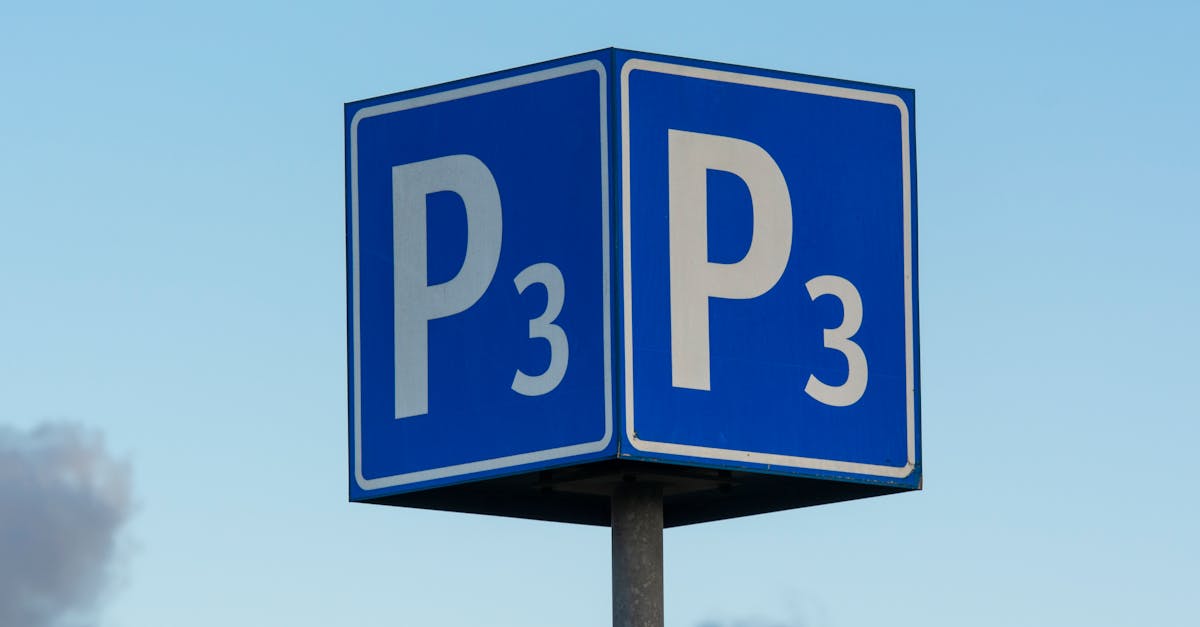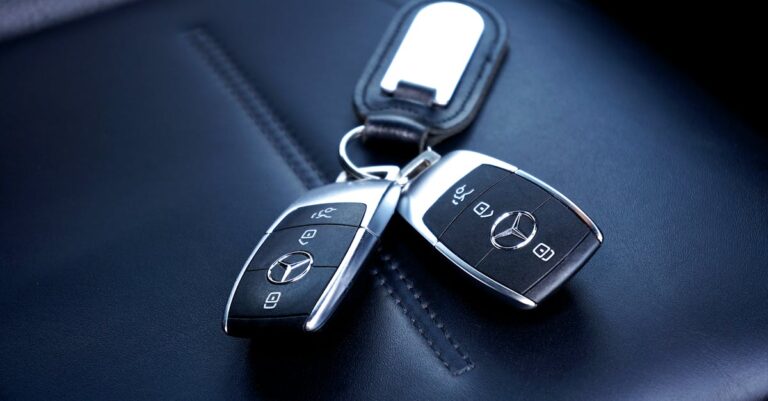Table of Contents
- Car Alignment: Why It’s Way More Important Than You Think
- What Exactly Is Car Alignment?
- Why Does Alignment Go Out of Whack Anyway?
- Ignoring Alignment? Big Mistake! Here’s Why:
- Signs Your Car Needs an Alignment Check ASAP
- The Alignment Process: What Happens at the Shop?
- How Often Should You Get Your Car Aligned?
- Alignment vs. Tire Balancing: What’s the Difference?
- The Cost Factor: Is it Worth It?
- Conclusion: Keep Your Ride Rolling Smoothly
- Frequently Asked Questions (FAQs)
Car Alignment: Why It’s Way More Important Than You Think
Let’s talk about something that often gets overlooked in car maintenance until there’s a problem: wheel alignment. You might think, “My car drives straight, so what’s the big deal?” Well, trust me, proper car alignment is like the unsung hero of your vehicle’s performance, safety, and even your wallet. It’s about much more than just keeping your car pointed in the right direction. Think of it like your own posture; slouching might feel okay for a bit, but over time, it leads to aches, pains, and bigger issues. Similarly, poor alignment slowly but surely causes problems for your car.
Ignoring your car’s alignment is like trying to run a marathon with shoes that are two sizes too big and laced improperly. You might make it, but it’s going to be uncomfortable, inefficient, and you’ll likely wear things out much faster than necessary. So, buckle up as we dive deep into the world of car alignment, exploring why it’s crucial, how it works, and how keeping it in check can save you headaches and money down the road.
What Exactly Is Car Alignment?
Okay, first things first. When we talk about “car alignment” or “wheel alignment,” what are we actually referring to? It’s not just about making sure your wheels look straight when parked. It’s a complex adjustment of your vehicle’s suspension system – the system that connects the car to its wheels. The goal is to adjust the angles of the tires so they make proper contact with the road and work together harmoniously.
Not Just Pointing Wheels Straight
While pointing straight is part of it, alignment involves precise measurements and adjustments specified by your car’s manufacturer. These specifications ensure optimal handling, tire wear, and overall vehicle stability. It’s about ensuring that the wheels are perpendicular to the ground and parallel to each other, according to the design of your specific vehicle. Think of it like tuning a guitar; each string needs to be adjusted to the perfect pitch for the instrument to sound right. Your car’s wheels need that same level of precise tuning for optimal performance.
The Key Angles: Camber, Caster, and Toe
Mechanics focus on three primary angles when performing an alignment. Getting these right is the secret sauce to a smooth, efficient ride:
Camber: The Inward/Outward Tilt
Imagine looking at your car from the front. Camber is the angle of the wheel relative to the vertical axis. If the top of the wheel tilts outward, that’s positive camber. If it tilts inward, that’s negative camber. Zero camber means the wheel is perfectly vertical. Why does this matter? The camber angle affects the amount of tire tread making contact with the road during cornering and straight line driving. Incorrect camber is a major cause of uneven tire wear, specifically on the inner or outer edges of the tire tread.
Caster: Steering Stability’s Best Friend
Now, look at your wheel from the side. Caster is the angle of the steering axis (the pivot point that the wheel turns on) relative to the vertical. Think about the front wheels on a shopping cart – they have a lot of positive caster, which helps them trail behind the pivot point and straighten out automatically. In your car, positive caster helps with steering stability, self centering (making the steering wheel return to center after a turn), and cornering effectiveness. If the caster is different on one side than the other, your car will likely pull towards the side with less positive caster.
Toe: Pointing In or Out
Picture looking down at your wheels from above. Toe refers to the direction the front of the wheels are pointing relative to each other. If they point slightly inward, like your toes pointing towards each other, that’s “toe in.” If they point outward, that’s “toe out.” Zero toe means they are perfectly parallel. Toe settings significantly impact steering response and tire wear. Excessive toe in or toe out causes the tires to essentially scrub sideways as they roll forward, leading to rapid and feathered tire wear across the tread.
Why Does Alignment Go Out of Whack Anyway?
So, if alignment is set at the factory, why doesn’t it just stay that way? Life happens! Your car’s suspension is constantly dealing with forces from the road, and several factors can knock those precise angles out of specification.
The Usual Suspects: Potholes and Curbs
This is the most common culprit. Hitting a nasty pothole, bumping aggressively against a curb while parking, or even driving over speed bumps too quickly can deliver a significant jolt to your suspension system. This impact can easily bend suspension components or shift their adjustments, throwing your alignment off in an instant. It’s like tripping on the sidewalk – even a small stumble can throw off your balance.
Wear and Tear: The Slow Creep
Nothing lasts forever, right? Suspension components like ball joints, tie rod ends, bushings, and springs wear out over time due to constant movement and stress. As these parts develop play or sag, they can no longer hold the alignment angles precisely where they need to be. This is often a gradual change, so you might not notice it immediately, but it slowly impacts tire wear and handling.
Modifications: Lifting and Lowering
Changing your vehicle’s ride height by installing lift kits or lowering springs significantly alters the suspension geometry. Whenever you modify the suspension in this way, a wheel alignment isn’t just recommended; it’s absolutely necessary to correct the angles and ensure the vehicle drives safely and doesn’t destroy its tires.
Ignoring Alignment? Big Mistake! Here’s Why:
Okay, maybe you hit a pothole, or perhaps you just haven’t had an alignment in ages. What’s the worst that could happen? Ignoring misaligned wheels can lead to a cascade of problems, costing you money and potentially compromising your safety.
Tire Trouble: Uneven Wear and Tear
This is probably the most direct and noticeable consequence. When your wheels aren’t aligned properly, your tires don’t make even contact with the road. This forces certain parts of the tread to work harder and wear down much faster than others. You might see wear on just the inside edge, the outside edge, or a feathered pattern across the tread. This drastically shortens the lifespan of your tires, meaning you’ll be shelling out for replacements much sooner than expected. Good tires aren’t cheap, so protecting your investment makes financial sense!
Fuel Economy Takes a Hit
Think about trying to walk with your feet pointing dramatically inwards or outwards. It takes more effort, right? The same applies to your car. Misaligned wheels create drag because the tires are essentially fighting against each other or scrubbing against the pavement instead of rolling smoothly. Your engine has to work harder to overcome this resistance, which means it burns more fuel. Getting an alignment can actually improve your gas mileage – maybe not dramatically, but every little bit helps!
Steering and Handling Issues
Proper alignment is critical for predictable and safe handling. Misalignment can cause symptoms like the car pulling to one side (forcing you to constantly correct the steering wheel), a crooked steering wheel even when driving straight, or sloppy or unresponsive steering. In emergency maneuvers, this lack of precise control could be dangerous. You want your car to go exactly where you point it, especially when you need to react quickly.
Putting Extra Strain on Components
The forces generated by misaligned wheels don’t just wear out tires; they also put additional stress on various steering and suspension parts. Bushings can wear out faster, ball joints can develop play sooner, and even wheel bearings can suffer from the uneven loads. Addressing alignment issues promptly can help prevent premature failure of these more expensive components, saving you from bigger repair bills down the line.
Signs Your Car Needs an Alignment Check ASAP
Your car often gives you clues when its alignment is off. Learning to recognize these signs can prompt you to get it checked before minor issues turn into major headaches.
The Steering Wheel Isn’t Centered
When you’re driving straight down a flat, level road, your steering wheel should be centered or very close to it. If you notice it’s consistently off angle to the left or right while driving straight, that’s a strong indicator that your alignment, particularly the toe setting, needs adjustment.
Vehicle Pulling to One Side
Does your car constantly drift or pull towards the left or right when you briefly let go of the steering wheel on a straight road? While tire pressure or road crown can sometimes cause a slight drift, a persistent pull is a classic symptom of misalignment (often related to camber or caster angles being unequal side to side).
Squealing Tires During Turns
If your tires protest loudly with squeals or scrubbing sounds during routine, low speed turns (like pulling into a parking spot), it often means the toe angle is off, causing the tires to fight the turn rather than smoothly rolling through it.
Vibrations in the Steering Wheel
While vibrations can also be caused by unbalanced tires or worn suspension parts, misalignment can contribute, especially if it’s causing uneven tire wear. You might feel a shimmy or vibration through the steering wheel, particularly at certain speeds.
Visibly Uneven Tire Wear
Take a good look at your tires regularly. Do you see significantly more wear on the inside or outside edges compared to the center? Is there a strange sawtooth or feathered pattern across the tread blocks? This is physical evidence that your alignment is likely off and has been for some time.
The Alignment Process: What Happens at the Shop?
So, you’ve decided your car needs an alignment. What actually goes on when you take it to a qualified mechanic or tire shop? It’s a pretty high tech process these days!
First, the technician will likely inspect your suspension and steering components. There’s no point aligning a car with worn out parts, as the alignment won’t hold. They’ll check for looseness in tie rods, ball joints, and bearings, and look at the condition of bushings and springs. If significant wear is found, those parts will need replacement before the alignment can be done correctly.
Assuming everything checks out, they’ll drive your car onto an alignment rack. This rack has built in sensors or turntables for the wheels. Precision sensors (often using lasers or cameras) are attached to each wheel. These sensors communicate with a central computer that has a database of manufacturer alignment specifications for nearly every vehicle.
The computer measures the current camber, caster, and toe angles and compares them to the manufacturer’s recommended settings for your specific make and model. The technician then uses specialized tools to make adjustments to various suspension components (like tie rods, control arms, or eccentric bolts) to bring the angles back within the specified range. They’ll typically adjust the rear wheels first (if applicable) and then the front wheels. Once all adjustments are made and the computer confirms the angles are correct, they’ll provide you with a printout showing the “before” and “after” measurements.
How Often Should You Get Your Car Aligned?
This is a common question, and there isn’t a single “one size fits all” answer, but there are good guidelines. Many manufacturers don’t specify a strict interval in the regular maintenance schedule unless symptoms are present.
However, a good rule of thumb is to have your alignment checked at least once a year or every 10,000 to 12,000 miles. Why? Because even normal driving can gradually cause slight changes, and catching them early prevents tire wear.
You should definitely get your alignment checked under these circumstances:
- After installing new tires (to protect your investment).
- After any significant impact with a pothole or curb.
- After replacing suspension or steering components (like struts, shocks, tie rods, ball joints, control arms).
- If you notice any of the warning signs mentioned earlier (pulling, uneven tire wear, crooked steering wheel).
- After modifying your vehicle’s ride height.
Think of it as preventative maintenance – it’s often cheaper to check and adjust alignment periodically than to replace tires prematurely or repair worn suspension parts.
Alignment vs. Tire Balancing: What’s the Difference?
People often confuse wheel alignment with tire balancing, but they are distinct services addressing different issues.
Alignment, as we’ve discussed, involves adjusting the angles of the wheels relative to the vehicle’s suspension and chassis. It ensures the wheels are pointing correctly for optimal tire wear, handling, and stability.
Tire Balancing, on the other hand, deals with the weight distribution of the tire and wheel assembly itself. Tiny imperfections in manufacturing can cause one side of the tire/wheel combo to be slightly heavier than the other. When spinning at high speeds, this imbalance causes vibrations, typically felt through the steering wheel or the seat. Balancing involves placing small counterweights on the wheel rim to ensure the weight is distributed evenly, allowing the wheel to rotate smoothly without vibrating.
You often get tires balanced when you get new tires installed or when rotating them. While both alignment and balancing contribute to a smooth ride and proper tire wear, they fix different root causes. You might need one, the other, or both!
The Cost Factor: Is it Worth It?
Getting a wheel alignment isn’t free, of course. The cost can vary depending on your location, the type of vehicle (some are more complex than others), and whether you need a two wheel or four wheel alignment. Generally, you can expect to pay somewhere between $80 and $200.
But is it worth it? Absolutely! Consider the costs of not getting an alignment:
- Premature Tire Replacement: A new set of tires can cost anywhere from $400 to well over $1000. If poor alignment wears them out twice as fast, you’re losing significant money. A single alignment service costs far less than even one premature tire replacement.
- Reduced Fuel Efficiency: While harder to quantify precisely, the extra fuel burned due to drag adds up over time.
- Suspension Component Wear: Replacing worn tie rods, ball joints, or other parts due to excessive strain can lead to repair bills costing hundreds of dollars.
- Safety and Comfort: Can you really put a price on predictable handling, a comfortable ride, and the peace of mind that comes with knowing your car is operating safely?
When you weigh the relatively modest cost of an alignment against the potential expenses and safety implications of neglecting it, it’s clear that regular alignment checks are a sound investment in your vehicle’s health and your own finances.
Conclusion: Keep Your Ride Rolling Smoothly
So there you have it. Car alignment isn’t just some obscure technical adjustment; it’s fundamental to how your car drives, handles, wears its tires, and even how much fuel it uses. Those precise angles – camber, caster, and toe – work together to keep your vehicle stable, your steering responsive, and your tires making optimal contact with the road. Ignoring the signs of misalignment, like a pulling sensation, a crooked steering wheel, or uneven tire wear, is essentially asking for trouble and higher expenses down the road. Making alignment checks a regular part of your vehicle maintenance routine, especially after hitting potholes or getting new tires, is one of the smartest, most cost effective ways to protect your tire investment, ensure your safety, and enjoy a smoother, more efficient driving experience. Don’t underestimate its importance – keep those wheels pointed in the right direction!
Frequently Asked Questions (FAQs)
Q1: Can I do a wheel alignment myself?
A: While technically possible with specialized tools and knowledge (like string alignments for older or race cars), achieving the precision required for modern vehicles is extremely difficult without professional computerized alignment equipment. The measurements need to be incredibly accurate (often down to fractions of a degree). For everyday drivers and modern cars, it’s highly recommended to leave wheel alignments to trained professionals with the proper gear.
Q2: Does hitting a small pothole mean I need an alignment?
A: Not necessarily. Cars are designed to handle minor road imperfections. However, a particularly hard or jarring impact, even from a seemingly small pothole, can be enough to knock the alignment out. If you notice any changes in steering feel, pulling, or a crooked steering wheel after hitting a pothole, it’s wise to get the alignment checked.
Q3: Will a new set of tires require an alignment?
A: It’s strongly recommended. While new tires don’t cause misalignment, getting an alignment when you install new tires ensures that your old alignment issues (which may have contributed to wearing out the previous set) don’t immediately start wearing down your brand new, expensive tires unevenly. It protects your investment and ensures you get the maximum life and performance from the new set.
Q4: How long does a typical car alignment take?
A: A standard four wheel alignment on a vehicle without major issues usually takes about an hour to an hour and a half. This includes the time to set up the equipment, take measurements, make adjustments, and verify the results. If suspension components are seized or require extra work to adjust, it could take longer.
Q5: What’s the difference between a two wheel and four wheel alignment?
A: A two wheel alignment (or front end alignment) only adjusts the angles of the front wheels (typically toe). This is generally suitable for vehicles with a solid rear axle where rear angles aren’t adjustable. A four wheel alignment measures and adjusts the angles on all four wheels (front toe, camber, caster, and rear toe and camber, where applicable). Most modern cars, especially those with independent rear suspension, require a four wheel alignment for optimal results and to ensure the rear wheels are tracking correctly with the front.









